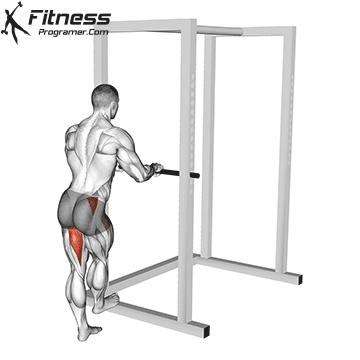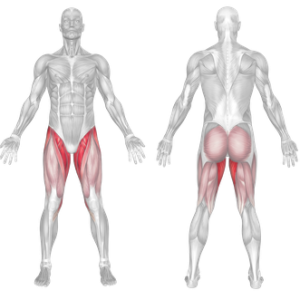Overview
Lateral leg swings are a dynamic mobility drill used to loosen the hips, activate the glutes, and prepare the lower body for physical activity. Performed by swinging the leg side to side across the body, this exercise enhances range of motion, balance, and coordination. It’s commonly used in warm-ups for running, squats, lunges, and sports that demand lateral movement.
How to do perform Lateral Leg Swings

Stand upright near a wall or pole for balance, with feet shoulder-width apart.
Shift weight onto one leg, keeping the supporting leg slightly bent.
Swing the opposite leg side to side in front of the body in a controlled arc.
Keep the torso upright and avoid twisting the spine or shoulders.
Perform 10–15 swings per leg, gradually increasing range of motion with each repetition.
Tips for Proper Form
Engage your core to stay upright and stable.
Keep the swinging leg straight, but not locked.
Avoid forcing the range of motion—let it increase naturally.
Use a steady tempo, not a jerky or rushed movement.
Maintain a neutral spine, and avoid excessive upper-body movement.
Common Mistakes
Rotating the torso instead of isolating the hips.
Swinging too fast or forcefully, risking strain or poor control.
Locking the support leg, which reduces balance and joint safety.
Using momentum instead of muscle activation.
Letting the leg drop too low, reducing the effectiveness of the stretch.
Benefits of the Lateral Leg Swings
Improves Hip Mobility: Increases range of motion in the hip joint, targeting tight abductors and adductors.
Activates Lower Body Muscles: Engages the glutes, hip flexors, and stabilizers, prepping them for training.
Enhances Dynamic Flexibility: Promotes better movement during workouts by improving flexibility through motion.
Supports Injury Prevention: Helps reduce tightness that contributes to muscle strain or joint discomfort.
Boosts Athletic Performance: Enhances lateral movement and leg control, especially in running and field sports.
Improves Balance and Coordination: Challenges stability on the standing leg and improves proprioception.
Ideal for Warm-Ups: Quickly prepares the hips and lower body without equipment or long setup.
How to Incorporate Into Your Routine
- For Beginners: Perform 1–2 sets of 10–12 swings per leg before lower-body workouts.
- For Strength Prep: Use in warm-ups before squats, deadlifts, or lunges to increase joint readiness.
- For Functional Training: Use as part of a movement prep series with high knees, leg cradles, or arm swings.
- For General Fitness: Use before walking, running, or group classes to loosen tight hips.
- For Recovery Days: Include in active recovery routines to improve circulation and reduce tightness.
Muscles Worked

Frequently Asked Questions
How high should I swing my leg?
Only as high as your mobility allows without losing balance or twisting the torso. Gradually increase height with practice.
Can I do this every day?
Yes. Lateral leg swings are low-impact and ideal for daily mobility and warm-ups.
Should I hold onto something?
Yes, especially for beginners. A wall or pole helps maintain balance and proper form.
Are these good for running warm-ups?
Absolutely. They activate hip muscles and increase range of motion for better stride mechanics.
Can I combine them with forward leg swings?
Yes. Use both directions to prepare for multi-plane movement and improve full hip mobility.
